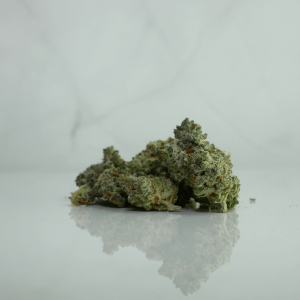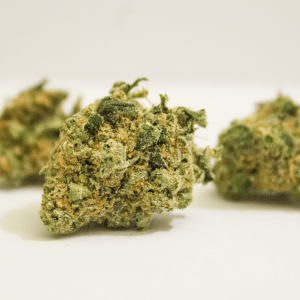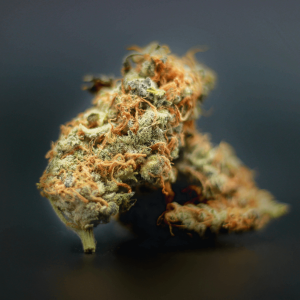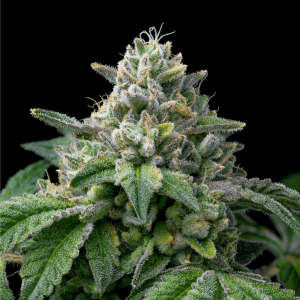Decarboxylation may sound like a mouthful, but it’s a process that plays a vital role in unlocking the full potential of cannabinoids. So, what exactly is decarboxylation? And how exactly do you… decarboxylate?
Decarboxylation is the chemical reaction that removes a carboxyl group from a molecule, converting compounds like THCa and CBDa into the more active forms, THC and CBD, that can bring about various effects. But beyond its importance in cannabis, decarboxylation is also a critical process in the world of chemistry, influencing everything from pharmaceuticals to food science.
In this blog, we’ll dive into what decarboxylation is, explore why it matters (especially in the world of weed), and highlight key points such as how to properly decarboxylate cannabis at home and the impact this process has on the efficiency of cured cannabis consumption. Let’s get started!
Understanding Decarboxylation
Decarboxylation involves converting raw cannabis flower compounds into their active forms through a simple chemical reaction. This process involves removing a carboxyl group, which is a functional group consisting of a carbon atom and two oxygen atoms.
When the raw cannabis plant is heated, this reaction happens, turning THCa and CBDa into THC and CBD. The beauty of decarboxylation lies in its ability to transform inert substances into compounds that interact more effectively with our bodies, making it a crucial step for anyone looking to enjoy the full benefits of cannabis.

The Role of Decarboxylation in Organic Chemistry
Decarboxylation plays a significant role in the realm of organic chemistry, especially when it comes to manipulating organic compounds. This reaction is foundational in synthesizing different molecules, and its applications can be seen in various case studies, from drug development to the creation of biofuels. For instance, decarboxylation is critical in the production of certain pharmaceuticals where the active compound needs to be activated.
Understanding this process not only opens the door to advanced chemical reactions but also showcases the versatility of organic compounds in real-world applications.
Decarboxylation in Cannabis
Cannabinoids are the chemical compounds found in cannabis that interact with our body’s endocannabinoid system, which helps regulate various functions like mood, memory, and appetite.
The most well-known cannabinoids, THC and CBD, start off in as acidic cannabinoids (in their acidic forms), THCa and CBDa, which don’t produce the desired effects. This is where decarboxylation comes in—it’s essential for activating the psychoactive properties of THC, allowing users to experience the high commonly associated with cannabis material.
By converting THCa (tetrahydrocannabinolic acid) into THC, decarboxylation not only enhances the effects but also maximizes the potential benefits of other cannabinoids, making it a crucial step for anyone wanting to get the most out of their cannabis experience.

Methods of Decarboxylation
Oven Baking
One of the easiest and most common methods for decarboxylating cannabis is oven baking.
Preheat your oven to around 220°F (104°C), spread your ground cannabis evenly on a baking sheet, and bake for about 30-40 minutes. This method gently heats the plant material, activating the cannabinoids without burning them.
Stovetop Methods
If you prefer a more hands-on approach, stovetop methods can work well too. Simply place your ground cannabis in a pan over low heat and stir it frequently for about 15-20 minutes.
This requires a bit of attention, but it can be a quick way to decarboxylate without preheating an oven.
Chemical Methods
For those looking to experiment with advanced techniques, chemical methods involve using solvents or specific chemicals to facilitate decarboxylation. These methods can be more complex and may require more equipment, but they can yield efficient results when done correctly.
Catalysts Used
Certain catalysts can also speed up the decarboxylation process. These can include acids or bases that help enhance the reaction and activate cannabinoids more quickly.
While this method isn’t commonly used for home preparations, it’s an interesting option found in more industrial settings.
Comparison of Decarboxylation Techniques
When it comes to decarboxylation, each technique has its own set of pros and cons.
Oven baking is a popular choice due to its simplicity and consistent results, reliably activating cannabinoids with minimal fuss. However, it can take longer and may require careful temperature control to avoid degrading the product.
On the flip side, stovetop methods offer a quick and hands-on approach, but they demand constant attention and can vary in effectiveness depending on the heat applied.
For those looking to dive deeper, chemical methods can achieve high efficiency by using solvents; however, they tend to be more complex and are usually better suited for industrial settings rather than casual home use.
Additionally, while catalysts can speed up the process, they often aren’t practical for at-home consumers. Ultimately, the best method depends on what you’re comfortable with and how much time you’re willing to invest!
Factors Affecting Decarboxylation
When it comes to successful decarboxylation, several factors play a significant role in how effectively the process occurs:
- Temperature: The heat applied is crucial. Too low a temperature won’t activate the cannabinoids properly, while too high can lead to combustion and loss of potency. Generally, sticking between 220°F and 250°F works well.
- Duration: The length of time you heat the material also matters. A longer duration at optimal temperatures can enhance cannabinoid activation, but overdoing it can degrade the compounds. Finding that sweet spot is key!
- Material characteristics: The form and type of cannabis used can influence decarboxylation. So, should weed be ground prior to decarboxylation? Well, ground cannabis tends to decarb more evenly than larger chunks, and the moisture content also plays a role—drier material decarboxylates more efficiently than moist cannabis. Taking these factors into account can help you get the best results every time!

Applications of Decarboxylation
Decarboxylation finds its footing in a myriad of applications, particularly in the medical field, where cannabinoids play a vital role.
In medicine, the activated compounds derived from decarboxylation, such as THC and CBD, are harnessed for their therapeutic benefits. These cannabinoids are increasingly being used to manage pain, reduce inflammation, and alleviate symptoms related to anxiety and chronic illnesses.
Meanwhile, in industrial settings, decarboxylation is a critical process in biochemistry, particularly for the development of biofuels and pharmaceuticals. By adjusting organic compounds through decarboxylation, researchers create pathways for synthesizing effective medications and alternative energy sources, highlighting the versatility of this essential chemical reaction.
Decarboxylation in Food Science
In the realm of food science, decarboxylation also plays an important role in enhancing nutritional content and flavor. For example, decarboxylation can activate certain compounds in foods, making nutrients more bioavailable and beneficial for our bodies. Moreover, this process can significantly impact the flavor profiles of various ingredients, contributing to the rich and complex tastes we enjoy in our meals.
Beyond flavor, decarboxylation can aid in food preservation by eliminating unwanted acidic components, ultimately extending the shelf life of products.
As we continue to explore the science of our food, understanding decarboxylation offers valuable insights into nutrition, flavors, and preservation techniques that can elevate our culinary experiences.
Common Misconceptions about Decarboxylation
When it comes to decarboxylation, there are a few myths floating around that can lead to confusion in the cannabis community.
One common misunderstanding is that cannabis flower decarboxylation only takes place in the oven—while oven baking is popular, various methods like stovetop techniques and chemical processes can achieve similar results.
Another misconception is that decarboxylation is unnecessary if you’re using cannabis in edibles or cannabis-infused oils; however, heating cannabis properly is crucial for activating the beneficial cannabinoids and enhancing their effects.
Additionally, some believe that longer heating times always yield better results, but overdoing it can degrade those precious compounds. It’s also important to note that decarbing is not just for THC; CBD and other cannabinoids benefit from the process as well.
The Science Behind Decarboxylation
Decarboxylation is steeped in fascinating molecular science that involves the transformation of cannabinoids from their inactive acid forms into their active counterparts.
At a molecular level, this reaction involves the removal of a carboxyl group (-COOH) from compounds like THCa and CBDa, which occurs most effectively when heat is applied. As the temperature rises, energy breaks the bonds holding the carboxyl group in place, releasing carbon dioxide (CO2) and resulting in the psychoactive THC or therapeutic CBD.
Enzymes also play a pivotal role in this process. These biological catalysts, found within the cannabis plant, facilitate various biochemical reactions, including decarboxylation, under certain conditions. For example, enzymes such as THCa synthase are integral during the plant’s growth; however, they become inactive post-harvest unless exposed to specific heat levels.
In a way, decarboxylation transforms the plant’s natural profile, activating its benefits and allowing users to experience the full psychoactive effects of cannabinoids. Understanding this intricate dance of molecules and enzymes not only enhances our appreciation of cannabis but also informs the best methods to maximize its potential for medicinal and recreational use.

A Step-by-Step Guide to Decarboxylation
Decarboxylating cannabis at home is simple and can be done with just a few tools. Here’s a straightforward procedure to get you started:
- Preparation: Preheat your oven to 240°F (115°C). This temperature strikes a nice balance for activating those cannabinoids without burning them away.
- Break it down: Take your cannabis and break it into smaller pieces. Aim for a roughly ground consistency to ensure even heating. Avoid turning it into a fine powder, as this can lead to overcooking.
- Spread it out: Line a baking sheet with parchment paper and spread your ground cannabis evenly across the sheet. Spread it out as much as possible for even heat distribution.
- Bake it: Pop your baking sheet into the oven and set a timer for 30-40 minutes. Every 10 minutes or so, gently stir the cannabis to promote uniform decarboxylation.
- Cool it down: Once the time is up, remove the sheet and let the cannabis cool completely before using it.
Tips for Best Results
- Monitor Closely: Keep an eye on your cannabis to avoid burning. The smell should be earthy, not charred.
- Store Properly: After decarboxylation, store your activated cannabis in an airtight container away from light and humidity to preserve its potency.
- Experiment: Every strain can behave a little differently; don’t be afraid to tweak your technique as you find what works best for your needs!
Conclusion
Understanding decarboxylation is vital for anyone looking to fully harness the benefits of cannabis, whether for medicinal or recreational use. This process transforms inactive compounds into their active forms, enhancing their therapeutic properties.
We’ve explored common misconceptions, the underlying science, and practical steps for decarboxylating cannabis at home. By mastering this essential technique, you can elevate your culinary creations, maximize potency, and truly appreciate the complexities of cannabinoids.
Now, with this knowledge in hand, you’re better equipped to enjoy all that cannabis has to offer. Happy decarbing!

Frequently Asked Questions
1. What is the meaning of decarboxylate?
Decarboxylate refers to the process of removing a carboxyl group from a compound, transforming it from its inactive acid form into its active form. In the context of cannabis, decarboxylation activates cannabinoids like THC and CBD, allowing them to produce their desired effects when consumed.
2. What is the best method to decarboxylate?
The best method for decarboxylating cannabis often depends on personal preference, but the oven is a popular choice due to its reliability. Preheating to around 240°F (115°C) and baking for 30-40 minutes provides consistent results. Other methods can include stovetop techniques or the use of specialized decarboxylation devices, which may offer more precise temperature control.
3. Is decarboxylate necessary?
Yes, decarboxylation is crucial for unlocking the full potential of cannabis. Consuming cannabis without decarbing it means you might miss out on the therapeutic benefits of THC and CBD, as these compounds need to be activated through heat to produce their effects effectively. So, with that being said, decarboxylated cannabis is essential for consumption!
4. How do you know when your bud is decarbed?
You can tell your bud is decarbed cannabis by observing its color and aroma. It should have a slightly toasted, golden-brown appearance, and the aromatic compounds will be earthy and rich rather than fresh or grassy. Additionally, if you taste a small sample, it should feel more potent, marking the successful activation of cannabinoids.

 Rewards
Rewards




